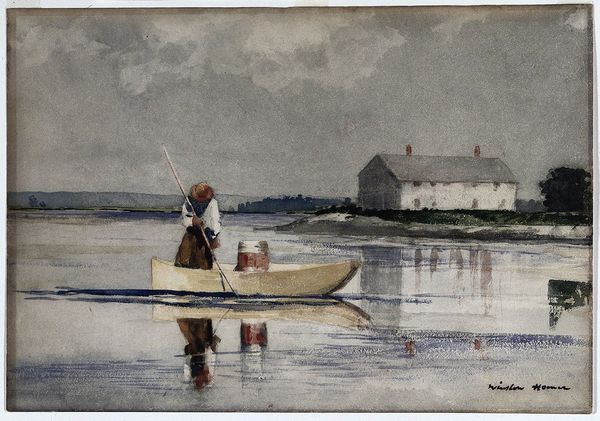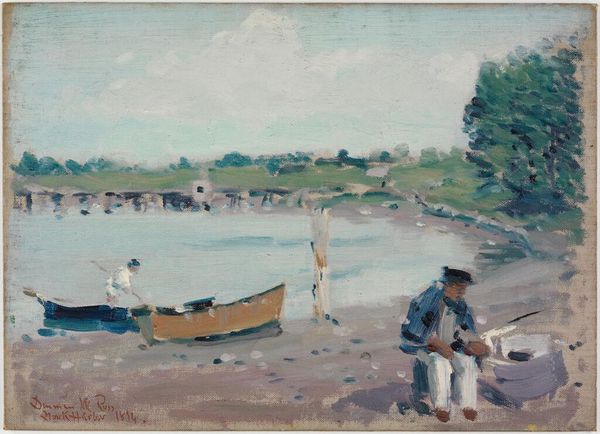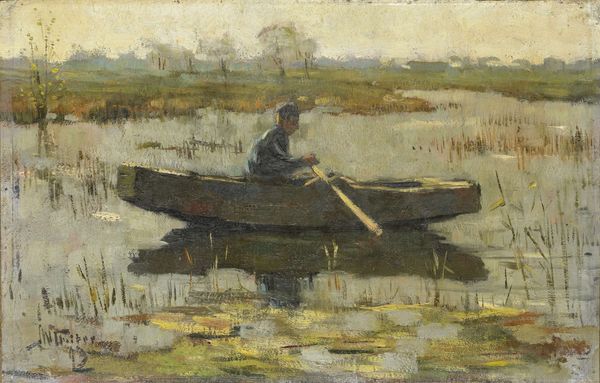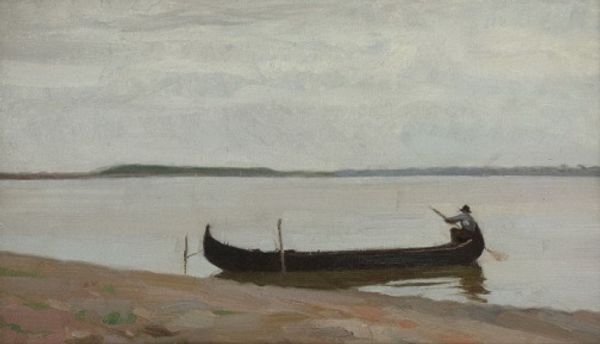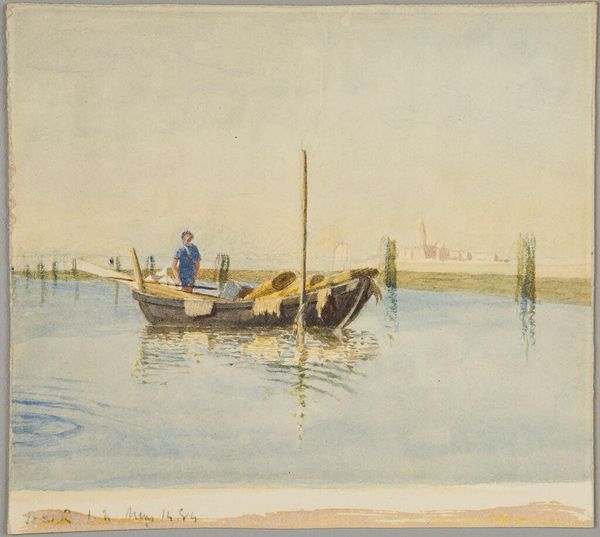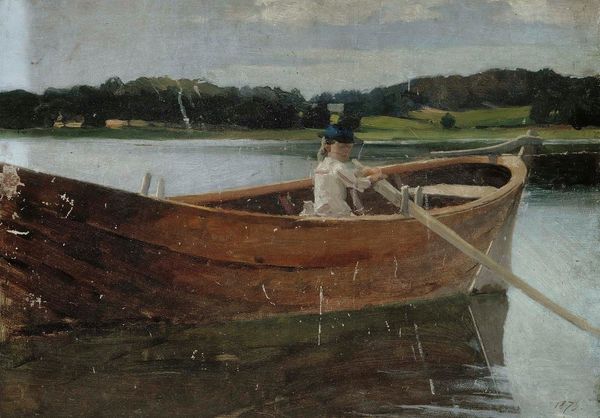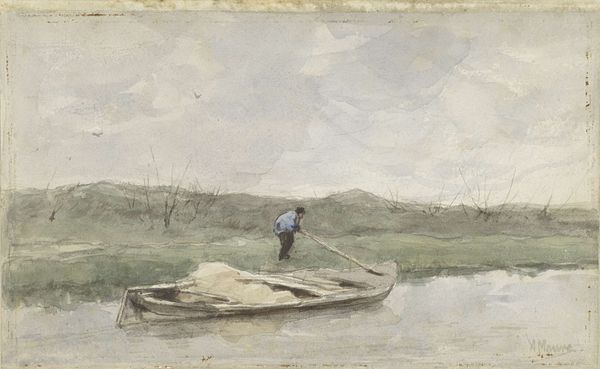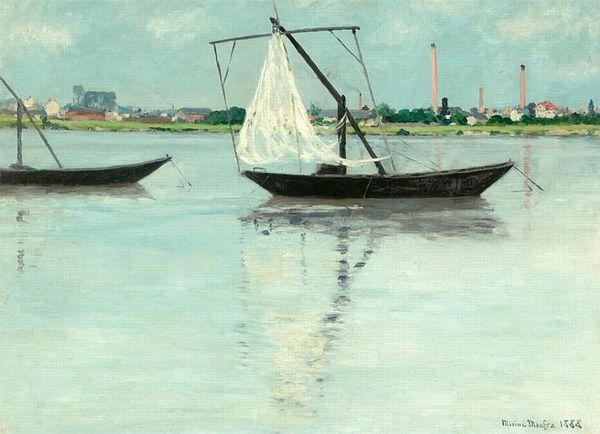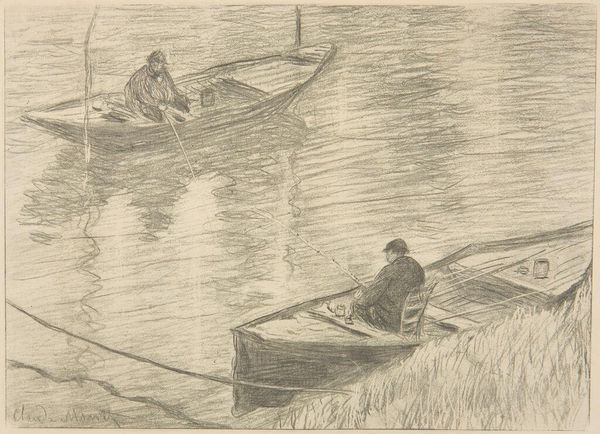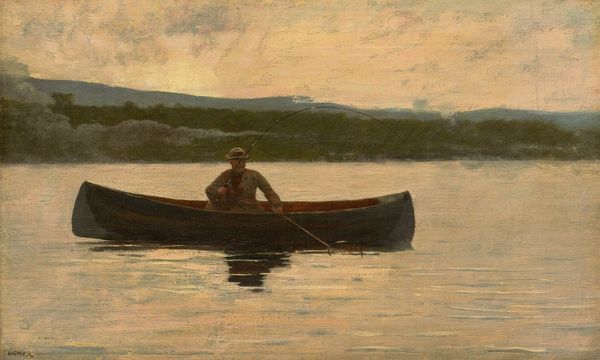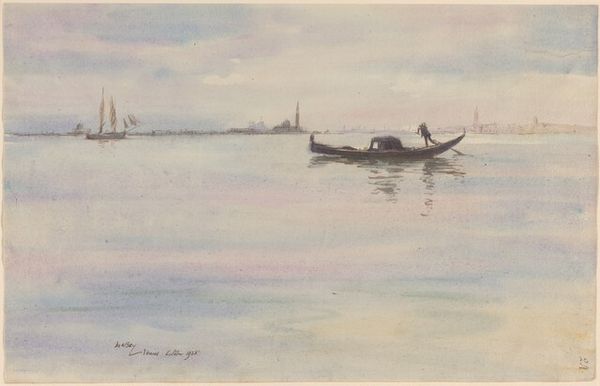
Copyright: Public domain
Curator: Thomas Anshutz painted "Low Tide" in 1897. It presents us with a tranquil waterscape, executed in watercolor, showcasing a solitary figure navigating a small boat. Editor: Immediately, I'm struck by the quietude. The muted colors and diffused light evoke a sense of stillness and reflection. The man in the boat, his back turned, seems like a symbolic representation of introspection. Curator: It's interesting that you key in on the introspective aspect, considering Anshutz was painting during a period when ideas about American identity were deeply tied to labor and the natural world. What connections can we make to artistic and labor practices? Editor: Well, water often signifies the subconscious. The lone boatman could symbolize a journey into the unknown aspects of self. The very pale shades amplify this, giving it the symbolism of purity of spirit and dreamlike consciousness. Curator: Considering Anshutz’s other works that explore industry and the human figure, I would say the painting challenges our understanding of his established artistic vision. Perhaps he is exploring the shifting relationship between humanity and nature at the turn of the century? What do you make of the boat? Editor: The boat acts as a vessel, not just in the literal sense, but also metaphorically, as a carrier of the self through emotional currents. Its humble form suggests a closeness to nature, a life lived in harmony with the rhythms of the sea. There is almost a religious reverence suggested by it. Curator: It is hard not to find the quiet moment powerful, considering the artist usually preferred depictions of steel mills and factories in other works. His impressionistic handling of light is a clear stylistic departure that may show an alternative vision to his established view. Editor: It's amazing how an artwork like "Low Tide" can become a mirror reflecting our own search for meaning in the mundane, the silent stories hidden beneath the surface of everyday life. Curator: Indeed. Considering the artwork’s time period and the artist, we gain insight into an important artist at odds with himself—but also with the society surrounding him.
Comments
No comments
Be the first to comment and join the conversation on the ultimate creative platform.
